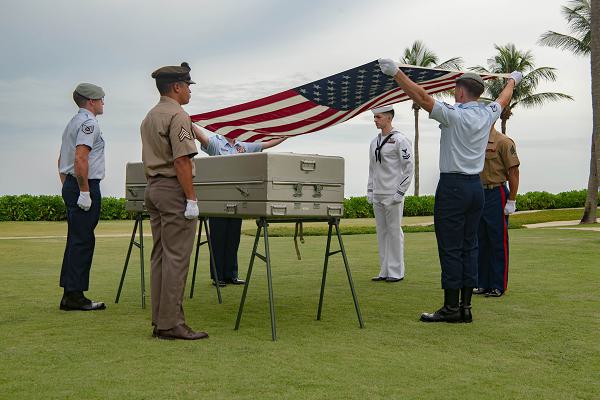
Vietnam. (September 10, 2024): America makes a solemn promise to every person who dons the uniform of our country; You will not be left behind. In this photo by Sergeant Keion Jackson, members of the Defense POW/MIA Accounting Agency repatriation team prepare to drape a flag during a ceremony transferring possible remains for identification. The ceremony marked the end of this round of efforts to recover unaccounted-for personnel from the Vietnam War.
The Defense POW/MIA Accounting Agency was formed by consolidating multiple organizations into one sophisticated search and recovery operation. The Agency is charged with searching for more than 80,000 American service personnel who are missing from previous conflicts.
The Agency’s Laboratory is the world’s largest skeletal identification facility and is staffed by more than 150 anthropologists, archaeologists, forensic odontologists, and support personnel. The lab has three locations, two in Hawaii and another in Nebraska.
The recovery work begins in the field much the same way a crime scene would be treated only it is an archaeological site. As such, scientists use accredited forensic best practices that are recognized by authorities and will stand up in court. These recovery missions typically last about sixty days and sites can range in size from a few feet to an area as large as a football field in air crash investigations.
Once remains are sent to DPAA scientists, there are a variety of techniques and lines of evidence to aid in the identification of unaccounted-for individuals. The search usually begins with an analysis of skeletal remains, any material evidence found at the scene, and personal effects. Scientists also employ forensic DNA testing that is responsible for ninety five percent of all new identifications. Once a fallen comrade is identified, the family is notified and often a memorial is held in their honor to officially welcome them home.
No matter how long it takes, America leaves no one behind.


